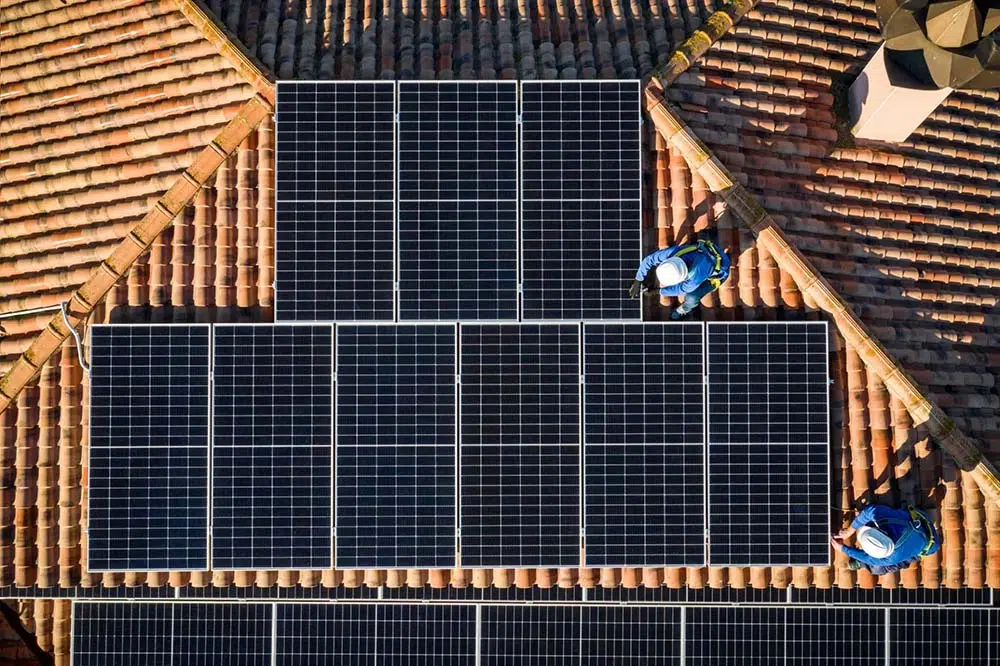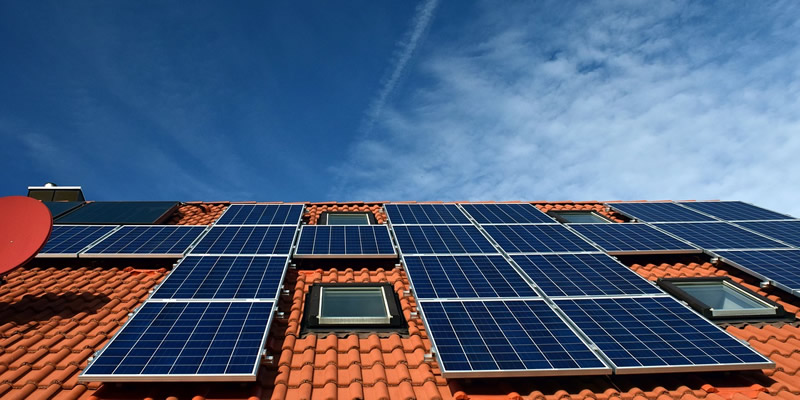How are Solar Panels Installed?
June 8, 2024

Solar panels are an increasingly popular way to generate electricity, if you’re wondering how are solar panels installed we’ll explain here.
For those who are new to the technology, the installation process can be intimidating. This article will cover the basics of solar panel installation, from the initial assessment to the final inspection.
How are Solar Panels Installed?
Solar panels are an increasingly popular way to generate electricity and reduce reliance on fossil fuels. Installing a solar panel system can be an excellent investment for your home, saving you money on your energy bills and helping to reduce your carbon footprint.
However, the installation process can be complex, involving multiple steps and specialized equipment.
We’ll walk you through the process of installing solar panels on your home, from assessing your home’s suitability for solar to activating your system.
Assessing Your Home’s Suitability for Solar Panels
Before you can install solar panels, you need to determine whether your home is a good candidate for solar. Several factors can affect your home’s suitability, including:
- The orientation and pitch of your roof: Solar panels work best when they are installed on a south-facing roof with a pitch of between 15 and 40 degrees.
- The amount of shade your roof receives: Shade from trees, buildings, or other obstructions can reduce the amount of sunlight that reaches your solar panels, reducing their effectiveness.
- The size of your roof: The size of your roof will determine how many solar panels you can install.
- Your electricity usage: Your energy bills will give you an idea of how much electricity you use, which will help you determine how many solar panels you need.
To assess your home’s suitability for solar panels, you can use an online solar calculator or consult with a solar panel installer near you.
Designing Your Solar Panel System
Once you have determined that your home is a good candidate for solar panels, you will need to design your solar panel system. This involves determining the size and placement of your solar panels, as well as choosing an inverter to convert the energy from your panels into usable electricity.
Your solar panel installer will work with you to design a system that meets your energy needs and fits within your budget. They will also help you choose high-quality solar panels and an inverter that is compatible with your system.
Obtaining Permits and Approvals
Before you can install solar panels on your home, you will need to obtain the necessary permits and approvals from your local government. This typically involves submitting an application and paying a fee.
Your solar panel installer will be familiar with the permitting process in your area and can help you navigate the bureaucracy.
They will also ensure that your solar panel system meets all local building codes and safety regulations.
You can take a look here for qualified providers in your area and save time on this step.
Looking also for the best internet deals? Check here iWispr plans
5. Choosing a Solar Panel Installer
Choosing the right solar panel installer is critical to the success of your solar panel installation. You should look for an installer who is experienced, licensed, and insured. They should also be knowledgeable about solar panel technology and able to answer your questions.
To find a reputable solar panel installer, you can ask for referrals from friends and family or search online for reviews, simply browse here for qualified providers in your area.
You should also obtain multiple quotes from different installers to ensure that you are getting a fair price.
How are Solar Panels Installed: Preparing Your Home
Before the installation process begins, you will need to prepare your home for the arrival of the solar panel installers. This may involve clearing out clutter or furniture from the areas where the installers will be working.
You should also ensure that the installation area is easily accessible, with no obstructions or hazards that could cause accidents. Your solar panel installer will provide you with specific instructions on how to prepare your home for installation.
Also Read: Are Solar Panels Covered by Home Insurance?
Installing the Solar Panels
Once your home is ready, the installation process can begin. The first step is to mount the solar panels on your roof using specialized equipment. The panels will be securely attached to your roof to ensure that they can withstand high winds and other weather conditions.
The installation process typically takes one to three days, depending on the size of your solar panel system and the complexity of the installation.
Installing the Inverter and Connecting to the Grid
After the solar panels are installed, the next step is to install the inverter, which converts the energy generated by the solar panels into usable electricity. The inverter is typically installed near your home’s electrical panel.
Once the inverter is installed, your solar panel installer will connect your solar panel system to the grid. This involves installing a meter that tracks the amount of energy your solar panels generate and the amount of energy your home consumes.
Inspecting and Activating Your Solar Panel System
After your solar panel system is installed, it will need to be inspected by your local government or utility company. This inspection ensures that your solar panel system meets all local building codes and safety regulations.
Once your solar panel system passes inspection, it can be activated, and you can start generating your own electricity. Your solar panel installer will provide you with instructions on how to monitor your system and ensure that it is functioning correctly.
Maintaining Your Solar Panel System
Like any other piece of equipment, your solar panel system will require regular maintenance to ensure that it continues to function correctly.
This may involve cleaning the solar panels, checking the connections, and monitoring the inverter.
Your solar panel installer may offer a maintenance plan that includes regular inspections and cleaning. You should also keep an eye on your system and contact your installer if you notice any issues.
Installing solar panels on your home is a great way to generate your own electricity and reduce your reliance on fossil fuels. While the installation process can be complex, working with a reputable solar panel installer can help ensure that your installation is successful.
Check here for Sollar Installers near you. By following the steps outlined in this article, you can have a solar panel system installed on your home and start enjoying the benefits of solar power.

